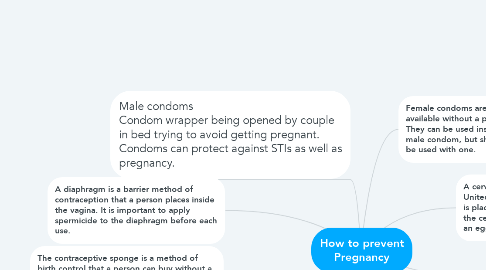How to prevent Pregnancy
by Michael Bucong

1. Contraceptive pills Birth control pills in packets in a pile, hormonal contraceptives. There are two types of birth control pills. One stops menstruation, the other does not.
2. Spermicide is a chemical that inactivates sperm. It is available to buy without a prescription and is used with forms of barrier contraception, such as condoms, but not with the sponge.
3. The contraceptive sponge is a method of birth control that a person can buy without a prescription. Made of polyurethane foam and containing spermicide, the sponge is placed deep inside the vagina to block entry to the uterus.
4. A diaphragm is a barrier method of contraception that a person places inside the vagina. It is important to apply spermicide to the diaphragm before each use.
5. Male condoms Condom wrapper being opened by couple in bed trying to avoid getting pregnant. Condoms can protect against STIs as well as pregnancy.
6. Vaginal ring According to the NHS, the birth control ring known as the NuvaRing is over 99 percent effective when used correctly, but is typically less than 95 percent effective due to human error.
7. Female condoms are also available without a prescription. They can be used instead of a male condom, but should never be used with one.
8. A cervical cap (sold as FemCap in the United States) is a soft silicone cup that is placed deep inside the vagina. It covers the cervix to stop sperm from reaching an egg.
9. Patches According to the NHS, the contraceptive patch is 99 percent effective when used correctly. With typical use, it is closer to 90 percent effective.
10. Injection The contraceptive shot (Depo-Provera) is usually given by a doctor every 12 weeks. According to the CDC, when used correctly, and assuming that a person gets their shot on time, it is over 90 percent effective at preventing pregnancy.


